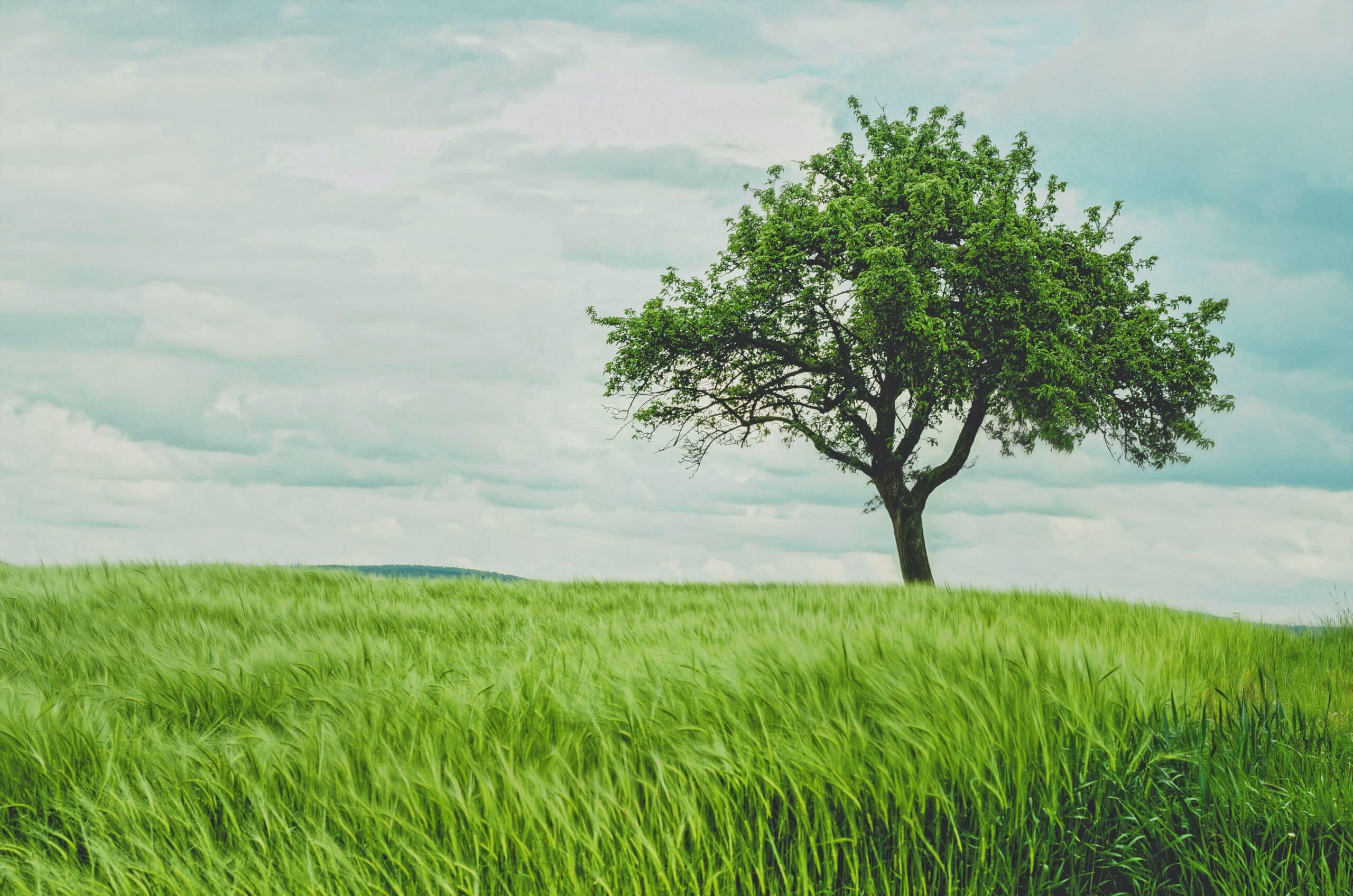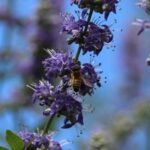The jacaranda tree is a majestic vision of nature in its finest form. Its cascading branches are a lush reminder of the beauty and power of nature, while its delicate lavender blooms provide a stunning contrast to the deep green leaves beneath. A symbol of hope and renewal, the jacaranda tree can provide an oasis for gardeners seeking to create a tranquil outdoor space. With the right care and attention, these exquisite trees will thrive for years to come.
For those looking to add one of these magnificent trees to their home, it’s important to understand the basics of plant care and growing requirements. Jacarandas prefer full sun exposure and acidic soil with plenty of organic matter, but they do require regular pruning in order to keep them healthy and looking their best. Regular watering is also essential during times of drought or extreme heat.
This article provides detailed information on the proper care and maintenance necessary for these beautiful trees, including planting instructions, watering tips, pruning techniques and more. Whether you’re adding one as an accent piece in your backyard or establishing an entire grove in your garden, this guide will help you create a thriving environment where your jacarandas can reach their full potential.
What Is A Jacaranda Tree?
The Jacaranda tree is an absolute marvel! It’s a symbol of beauty and grace, gracing yards everywhere with its stunning purple blossoms. It’s no wonder that many gardeners want to learn how to grow this majestic tree. Let’s uncover what the Jacaranda tree is and how to care for it.
To start, the Jacaranda tree is native to South America and belongs in the Bignoniaceae family. It can grow up to 30 feet tall and usually has a broad crown of fern-like leaves that are green in color. In springtime, gorgeous lavender-blue flowers bloom from these trees that look like upside-down umbrellas with their showy stamens. That’s why they’re known as the ‘lilac trees of the tropics.
When it comes to caring for a Jacaranda tree, there are some basics that need to be taken into consideration. This includes choosing an area in your garden or yard where they can get enough sunlight – at least 6 hours per day – while also having protection from strong winds. Additionally, soil should be well-draining, slightly acidic, and fertile; mulch or compost should be added regularly as well during the growing season. Water regularly during dry spells and prune any dead wood or branches off your tree for optimal growth and health.
With proper care and attention, you’ll soon have a beautiful Jacaranda tree blooming in your yard!
Where To Plant A Jacaranda Tree
Planting a jacaranda tree is an exciting prospect, but it’s important to give it the right conditions for the best possible outcome. It’s worth taking some time to assess your garden or outdoor space and plan ahead before you commit to any purchase or even dig a hole.
Jacaranda trees prefer warm climates and lots of sunlight, so they do particularly well in southern United States areas. If you’re planting in colder climates, make sure that your Jacaranda will have some protection from harsh winter temperatures. You’ll also want to ensure that the soil drains well; if not, consider building up a mound so that water can run off easily.
If you’re planting more than one Jacaranda tree, be sure to leave enough room for them to grow and spread out. A gap of at least 10 feet between two trees is ideal. And don’t forget about overhead space – Jacarandas can grow up to 40 feet tall! Taking this into account when planning your new addition could save you trouble down the line.
Now that you know where best to plant your Jacaranda tree, it’s time to think about how best to look after it and give it the care it needs for healthy growth.
How To Care For A Jacaranda Tree
The jacaranda tree is like a beacon of hope – its vibrant colors and delicate blooms bring a sense of joy to any environment. But while this majestic tree can be a beautiful addition to any garden, it is important to understand how to properly care for it in order to ensure its health and longevity. In this section, we will explore the necessary steps for caring for your jacaranda tree.
To begin, it is essential that you provide your tree with plenty of sunlight. Jacarandas require at least six hours of direct sunlight per day in order to thrive, so make sure the area you plant it in is not too shaded or overcast. Additionally, make sure the soil where you plant your jacaranda has adequate drainage and air circulation – soggy soil can lead to root rot.
It’s also important that you water your jacaranda regularly but not excessively – about an inch or two every week should do the trick. If there are long periods of drought or heat waves, feel free to give your tree an extra drink. To keep pests away, spray your jacaranda with neem oil every few weeks (or more frequently if needed). This natural insect repellent will help keep pesky bugs out of your garden so that the beauty of the jacaranda can shine through without interruption.
Caring for a jacaranda tree takes time and effort, but when done correctly it can be a rewarding experience as you watch your tree bloom year after year. With just a bit of extra attention and dedication, you can have a stunningly beautiful addition to your garden that will last for years to come. Now that we’ve covered care tips for your jacaranda tree, let’s move on to discussing when and how much fertilizer should be used for optimal growth and health.
When To Fertilize A Jacaranda Tree
Fertilizing a jacaranda tree is an important part of its overall care. It can help the tree to become healthy and vigorous, as well as ensure that it puts on a beautiful show of blooms in the spring. If you want your jacaranda to really thrive, it’s important to know when to fertilize it.
When it comes to timing, the best time for fertilizing your jacaranda tree is just before its blooming season. This will give the tree enough nutrients to develop strong, healthy flowers and foliage during this time. In addition, fertilizing your jacaranda in late winter or early spring will also help prepare it for the upcoming growing season.
Applying a slow-release fertilizer prior to flowering gives your jacaranda a boost of nutrients that will last through the entire growing season. Be sure to follow the instructions on the fertilizer package carefully so that you don’t over-fertilize your tree. Doing so can cause damage and encourage pests and diseases, which could be detrimental to its health.
With proper fertilization at the right time, you can ensure that your jacaranda looks its best come springtime – and has all the nutrients it needs for a successful growing season ahead! Now let’s take a look at how much sunlight a jacaranda tree requires…
Sunlight Requirements For A Jacaranda Tree
The jacaranda tree is a treasured sight throughout the world. Its vivid purple blossoms create a stunning canopy of color in any landscape. But to ensure that this beauty remains, it’s important to give your jacaranda tree the sunlight it needs.
When it comes to sunlight requirements, jacarandas are quite forgiving. They thrive in full sun, but can tolerate partial shade as well. In fact, some experts recommend providing both full sun and partial shade for optimal growth and flowering. You should also consider the amount of reflected heat your jacarandas will receive if they’re planted near a wall or other reflective surface – this could affect their growth and flowering ability.
If you’re looking to maximize blooms on your jacaranda tree, then regular exposure to six hours of direct sunlight each day is ideal. If you want your plant to maintain its vibrant foliage all year round, then make sure it gets at least four hours of direct sunlight each day – especially during the spring and summer months when most of its energy is being used for flowering and leaf production.
TIP: Planting your jacaranda somewhere that receives morning sunlight is a great way to get the most out of your tree – not only will this help with flowering potential, but you’ll be able to appreciate those beautiful purple blossoms all season long!
Water Requirements For A Jacaranda Tree
Thriving in the warm and sunny climates of the American Southwest, the majestic jacaranda tree blossoms with a blanket of vibrant purple hues. Its beauty is mesmerizing, but ensuring this tree’s health requires more than looks alone. Watering your jacaranda correctly is key to keeping it healthy.
Jacarandas need moderate watering throughout the growing season, with occasional deep soakings during hot or dry spells. They prefer soil that is evenly moist but not soggy, so avoid overwatering at all costs. During periods of extreme heat or drought, your tree might need more frequent watering; however, keep an eye out for signs of water stress such as wilting leaves or yellowing foliage.
You may also consider using mulch around the base of your jacaranda tree to help retain moisture in the soil. Organic mulches like wood chips or shredded bark can help keep roots cool and moist while also reducing weeds and preventing compaction from foot traffic. Taking care to water your jacaranda correctly will promote its growth and ensure a healthy life for years to come.
With the proper amounts of sunlight and water taken care of, it’s time to focus on providing quality soil for your beloved jacaranda tree.
Soil Requirements For A Jacaranda Tree
Like a proud parent, the soil is the foundation for any healthy jacaranda tree. Without the right conditions, it won’t reach its full potential. Let’s explore how to give your jacaranda tree just what it needs.
When selecting soil for a jacaranda tree, go for something well-draining with a pH of 6.0-7.5 and plenty of organic matter. It should also be slightly acidic or neutral to prevent nutrient deficiency and root rot. Clay soils are especially bad for a jacaranda tree as they can be too dense and don’t allow enough air to reach its roots.
If you have poor quality soil in your backyard, don’t worry! Consider adding compost or other amendments to improve drainage and aeration. Doing this will provide the perfect balance of nutrients while ensuring that moisture doesn’t stay around the roots too long – both important factors in encouraging healthy root growth!
Now that you have the right soil in place, you can focus on pruning and maintenance of your jacaranda tree – so it has everything it needs to reach its full potential!
Pruning And Maintenance Of A Jacaranda Tree
Pruning and maintenance of a jacaranda tree is an important part of ensuring its health. Keeping your tree in top shape requires regular pruning and monitoring. Pruning can help the plant grow more symmetrically, as well as improving air circulation, which helps to keep pests at bay. It’s also important to check for signs of disease or other problems that may be affecting your tree.
The best time to prune a jacaranda tree is in late winter or early spring, after all the leaves have fallen off. This will give you a good view of the branches and help you decide where to make cuts. When pruning, always use clean sharp tools to ensure a smooth cut and avoid damaging the bark. Be sure to remove any dead or diseased branches as soon as possible to prevent further damage from spreading.
In addition to pruning, it’s essential to monitor your jacaranda tree for signs of overwatering or underwatering. If you notice any wilting leaves or discoloration on the bark, take action right away. You can adjust the amount of water you’re giving your plant accordingly, but if there are more serious issues, such as pest infestations, then it’s best to consult with a professional arborist for advice on how to care for your tree properly.
By following these simple steps you can ensure that your jacaranda tree stays healthy and grows strong for many years to come! Understanding the signs of overwatering or underwatering is key in providing adequate care – so keep an eye out for any changes in growth or appearance that may indicate an issue that needs addressing.
Signs Of Overwatering Or Underwatering A Jacaranda Tree
The jacaranda tree is a majestic symbol of beauty and resilience, standing tall and proud in many gardens around the world. Its large, umbrella-shaped canopy provides an oasis of shade, while its velvety purple blossoms make it a sight to behold. Yet, like any plant, this majestic tree needs special care and maintenance to thrive; overwatering or underwatering can cause the tree to suffer.
To ensure that your jacaranda tree gets the right amount of water and doesn’t fall victim to disease or pests, here are some key signs you should look out for:
• Wilting leaves – wilted leaves indicate that your tree isn’t receiving enough water. • Yellowed leaves – yellowed leaves can be a sign that you’re overwatering your tree. • Drooping branches – drooping branches can signal that your tree is being over-watered or under-watered. • Brittle bark or cracking limbs – brittle bark and cracking limbs are usually caused by too little water.
If you notice any of these signs on your jacaranda tree, take action immediately! Check the soil moisture level to determine whether you need to give more or less water to the plant. If needed, adjust accordingly with timely watering sessions. Taking these steps will help keep your jacaranda healthy and vibrant for years to come.
From ensuring adequate watering levels to checking for common diseases and pests, proper care is essential for keeping your jacaranda looking beautiful all year round...
Common Diseases And Pests Of A Jacaranda Tree
It is estimated that around 50 percent of plants in the world are affected by diseases and pests. Jacaranda trees are no exception, as they are susceptible to a variety of common problems. In this section, we’ll look at 10 common diseases and pests of a jacaranda tree.
The most common disease affecting jacaranda trees is root rot caused by fungi such as Phytophthora and Pythium. This can lead to stunted growth and wilting. Other fungal infections may cause leaf spots or brown lesions on the leaves, while bacterial diseases like bacterial leaf spot may also occur.
In addition to these fungal and bacterial issues, there are several insect pests which can affect jacarandas. These include aphids, scale insects, mites, and whiteflies. These pests feed on the plant’s sap and nutrients, causing damage to the foliage and reducing growth rates. To address any pest infestations, it’s important to use an appropriate pesticide when needed.
In order to keep your jacaranda tree healthy and thriving for years to come, it’s important to be aware of common diseases and pests which can affect them so that you can take preventative measures when necessary. Knowing how to propagate a jacaranda tree is also essential for ensuring its longevity – we’ll discuss this next.
Propagation Of A Jacaranda Tree
Propagating a jacaranda tree is like a gardener sowing the seeds of success. It’s an investment in the future, and a sign of hope for many years to come. Just like people, plants need to be nurtured, and propagating a jacaranda tree can result in beautiful blooms that will endure for generations. Here are some tips on how to get started:
Choose a healthy jacaranda tree that has been well-maintained, as this will ensure you have strong roots and branches when propagating your own tree.
Collect seeds from the pods that form after flowering season has ended and plant them in pots filled with potting soil or compost.
Water the seedlings regularly and ensure they get plenty of sunlight each day.
Transplant the seedlings into larger containers or directly into your garden once they have grown tall enough.
By following these steps, you’ll be able to propagate your own jacaranda tree with ease! Not only does this provide an opportunity for you to take ownership of something beautiful, but it also helps increase biodiversity in your area by providing much needed habitat for wildlife. Furthermore, propagating a jacaranda tree provides an aesthetically pleasing addition to any garden or landscape – allowing you to create vibrant displays of color year-round. With these benefits in mind, it’s easy to understand why so many people are choosing to propagate their own jacaranda trees!
Benefits Of Planting A Jacaranda Tree
Planting a jacaranda tree comes with many benefits – from providing beauty and shade to supporting the local wildlife. Not only that, but it also gives you an opportunity to serve your community by creating a lush landscape. Here, we’ll explore:
- the aesthetic benefits of planting a jacaranda tree
- how it helps support the local wildlife
- what other advantages come with planting this beautiful species.
The aesthetic benefits of planting a jacaranda tree are undeniable. Its stunning purple blooms will transform any garden into a paradise, while its leafy canopy provides shade and protection from the elements. Plus, when planted in groups, these trees can create a sense of unity in any outdoor space – making them perfect for public parks and gardens.
Not only does planting a jacaranda tree help beautify your outdoor space, but it also supports the local wildlife. The flowers of this species provide food for pollinators like butterflies and bees, while its branches offer nesting sites for birds and small mammals. Additionally, its deep roots help to prevent soil erosion – protecting the environment and keeping ecosystems healthy.
Finally, there are plenty of practical advantages associated with planting a jacaranda tree. For instance, their fast-growing nature makes them ideal for quickly establishing privacy or blocking out noise from busy streets – providing you with peace and tranquillity in your own home or garden. What’s more, they require minimal maintenance once established – meaning you won’t have to put in too much effort to keep them looking their best!
These reasons make it clear why so many people choose to plant jacaranda trees in their gardens – they offer plenty of aesthetic as well as practical advantages that nurture both people and nature alike. With all these benefits on offer, it’s no wonder these majestic trees are becoming increasingly popular worldwide! Moving forward then, let’s take a look at when we can expect blooms on our jacarandas…
When To Expect Blooms On A Jacaranda Tree
Pleasingly, planting a jacaranda tree can yield beautiful blossoms for years to come. But when should you expect these blooms? Preparing yourself to witness the vibrant flowers is paramount.
Generally, the jacaranda tree blooms from late spring to early summer, depending on the climate where it’s planted. If temperatures remain warm, they may bloom until mid-summer. Those gorgeous flowers typically last several weeks, delighting both humans and animals alike.
As such, planting a jacaranda tree can be an exciting opportunity to observe nature in its full glory – with vivid colors and intricate shapes that will captivate any onlooker. The warm weather months are when this incredible sight can be seen in all its splendor, so keep an eye out for the jacaranda’s magnificent blooms!
How To Use A Jacaranda Tree In A Landscape Design
The jacaranda tree is a beautiful landscape feature with its vibrant purple blooms. A great example of this is the jacaranda trees in Los Angeles, which light up the street in shades of lavender and blue when they’re in bloom. When used properly, these trees can be an integral part of any landscape design.
Using a jacaranda tree as part of your landscaping design can add visual appeal and interest to your yard or garden. Here are some tips on how to incorporate a jacaranda tree into your landscape design:
-Planting: Consider where you want to plant the jacaranda tree – it should receive full sun exposure for optimal growth and flowering. Planting near other plants or trees will also encourage natural interaction between species over time.
-Design: Use the unique shape and size of the jacaranda tree to create striking designs. For example, you can use them as focal points around pathways or even line them up along a walkway for a stunning display.
-Maintenance: Regular pruning and fertilization will help keep the jacaranda tree healthy and promote blooms throughout its life cycle. Also, make sure to water regularly during periods of drought to avoid stressing out the roots of your tree.
By following these steps, you can ensure that your jacaranda tree is an asset to any landscape design, adding color and visually appealing shapes while maintaining healthy growth over time. Now you can enjoy the beauty of this vibrant species without having to worry about upkeep or maintenance!
Tips For Growing A Healthy Jacaranda Tree
A jacaranda tree is like a guardian angel that stands tall in our gardens, providing us with its lush green foliage and gorgeous blue-purple flowers. Growing a healthy one isn’t always easy, but with the right tips, you can have the perfect jacaranda blooming in no time.
First, it’s important to remember that jacarandas need plenty of sunlight and water to thrive. They don’t mind heat or humidity, but they do need well-draining soil and fertilizer added every couple of months. Pruning should also be done regularly to ensure your tree stays in shape.
When it comes to using a jacaranda tree for landscape design, the sky’s the limit! You can use them as an accent piece or create a beautiful focal point with their stunning blooms. Planting them near walkways or seating areas can help create an inviting atmosphere for your guests to enjoy. Don’t forget to add some mulch around the base of the tree to keep it from drying out!
With these tips in mind, you’re sure to have success growing a healthy jacaranda tree for years to come – one that will surely become a beloved part of your outdoor space.
Frequently Asked Questions
How Long Does It Take For A Jacaranda Tree To Reach Maturity?
Jacaranda trees are popularly known for their eye-catching, vibrant purple blooms and lush green foliage. But how long does it take for a jacaranda tree to reach maturity? The answer is dependent upon the growing conditions and climate of the area in which it’s planted.
Generally speaking, a jacaranda tree can take anywhere from seven to 15 years to reach full maturity. During this time, the tree will grow at a steady pace, with the canopy of its branches reaching up to 30 feet wide when fully mature. Additionally, the tree can reach heights of more than 50 feet. In order to ensure optimal growth, it’s important to provide your jacaranda tree with consistent care and attention.
When caring for your jacaranda tree, make sure you water it regularly and apply mulch around its base in order to retain soil moisture and suppress weed growth. It’s also important that you prune your jacaranda tree regularly in order to help shape its form while keeping an eye out for any pests or diseases that might affect its health. With proper care, you can look forward to enjoying the sight of your jacaranda tree’s magnificent bloom each spring!
How Large Will A Jacaranda Tree Grow?
With its elegant and sprawling branches, a jacaranda tree can bring a majestic feel to any landscape. It’s like inviting royalty into your garden! But before you get too excited, it’s important to understand how large these beautiful trees can grow. Let’s explore this topic so you know what to expect.
When fully mature, a jacaranda tree can reach heights of over 40 feet and widths of nearly 30 feet. That means it could easily take up a huge portion of your backyard or garden! Aside from its impressive size, the jacaranda is known for its deep purple blooms that appear from late spring to early summer. Here are some other noteworthy details:
- Jacarandas typically live for 30-50 years, although some have been known to reach 100 years old!
- These trees prefer full sun exposure and warm climates, making them ideal for warmer parts of the world such as South America and Australia.
- The jacaranda tree needs plenty of water but should not be overwatered as this can cause root rot or other problems with the tree’s health.
When planning your landscaping project with a jacaranda tree in mind, be sure to consider its size and required care before planting it in your yard! With proper attention and maintenance, these magnificent trees will bring beauty to your garden for many years to come – an unforgettable sight that will make all your neighbors jealous!
Is A Jacaranda Tree Suitable For Container Gardening?
The Jacaranda tree is an eye-catching addition to any garden, but many people wonder if it’s suitable for container gardening. Interestingly, Jacaranda trees can grow up to twenty-five feet tall and have a spread of around thirty feet! With that in mind, let’s explore the potential of growing this majestic tree in a container.
To start, the Jacaranda tree requires well-draining soil with a pH balance between 6.0 and 7.5. It also needs full sun exposure for at least six hours per day, so be sure to choose a spot in your garden or patio that gets plenty of direct sunlight throughout the day. Here are four key considerations for successful container gardening with a Jacaranda tree:
• Size – The pot should be at least 18 inches wide and deep so that the tree has enough space to develop its roots without becoming rootbound. • Watering – Give your Jacaranda tree about an inch of water per week when it’s actively growing during spring and summer months. • Pruning – Prune away any dead or diseased branches after flowering season ends in summertime to help encourage healthy growth. • Fertilizer – Apply slow-release fertilizer every spring before new growth begins to help promote strong plant development throughout the year.
With some preparation and dedication, you can successfully grow a stunning Jacaranda tree in a container! Just remember to provide adequate drainage, direct sunlight, and enough room for its roots to spread out as your beautiful specimen matures over time.
What Kind Of Climate Is Best For A Jacaranda Tree?
The jacaranda tree is a beautiful and eye-catching addition to any garden, but it’s important to know which climate will best suit the tree’s needs. Jacarandas are native to tropical and subtropical climates, so they thrive in warm temperatures with high humidity. They also need plenty of sunlight, so they should be planted in an area that gets at least six hours of direct sunlight per day. Additionally, these trees require regular watering and moist soil conditions in order to reach their full potential.
If you’re looking for a jacaranda tree that can handle more extreme temperatures, then you may want to consider varieties like the hardier Jacaranda acutifolia or Jacaranda mimosifolia variegata. These varieties are much better suited for colder climates and can tolerate temperatures as low as 25 degrees Fahrenheit. They also require less water than other varieties, making them ideal for areas that experience droughts or long dry spells.
No matter what variety of jacaranda tree you choose, it’s important to keep in mind that these trees need a lot of care and attention if you want them to flourish. They should be watered regularly and fertilized periodically throughout the growing season. Pruning is also essential for keeping your jacaranda attractive and healthy; prune during the late winter or early spring when the plant is dormant, removing any dead or damaged branches. With a bit of dedication, your jacaranda can be a stunning addition to your garden all year round!
Are There Any Special Considerations When Planting A Jacaranda Tree Near Power Lines?
Believe it or not, planting a tree near power lines may be a tricky endeavor! While we normally think of trees as adding beauty and life to our environment, they can pose some unique safety concerns when located too close to power lines. Planting a jacaranda tree near these structures requires extra consideration to ensure its health and the safety of those around it.
Irony can be found in the idea of planting something as elegant and majestic as a jacaranda tree near an industrial structure like power lines. However, this challenge is worth taking on if done safely – especially since jacarandas are known for their stunning purple blooms which can turn any outdoor space into an oasis.
When considering where to plant a jacaranda near power lines, there are several important factors to take into account. First, make sure that the tree is planted well away from the lines themselves. The roots should also be kept away from any underground wires or cables. Additionally, check with your local utility company to see if they have any specific regulations regarding trees planted near their power lines. With these considerations in mind, you can rest assured that your beautiful jacaranda will thrive for many years to come – all while keeping your space safe and stylish!
Conclusion
In conclusion, the Jacaranda Tree is a beautiful addition to any garden or landscape. Its stunning purple blooms are sure to catch attention and its easy-care nature makes it an ideal choice for anyone wanting to enjoy a variety of colors in their outdoor space. With proper care and the right climate, these trees can reach maturity in just a few years and grow up to fifty feet tall. They are also suitable for container gardening, although special considerations must be taken when planting near power lines.
One example of how lovely the Jacaranda Tree can be is Mrs. Smith’s garden in Santa Monica, California. Mrs. Smith has had her tree for over five years now and it has grown almost forty feet tall and each year, its graceful branches fill with bright purple blooms that bring life to her garden from spring through summer. She takes great pride in caring for her tree, making sure it has enough sunlight and water throughout the year so that she can admire its beauty all season long.
The Jacaranda Tree is a stunning addition to any home or landscape that will surely brighten up your outdoor space with its vibrant purple flowers. With minimal care and maintenance, you too can enjoy the beauty of this remarkable tree for many years to come!





























